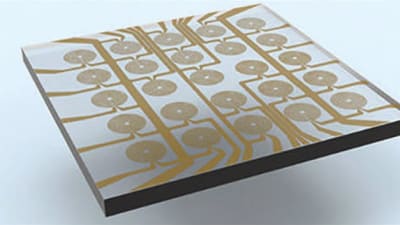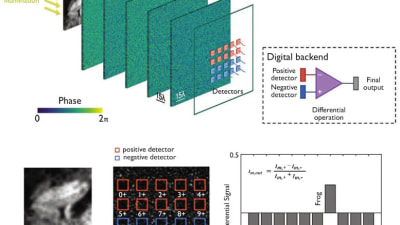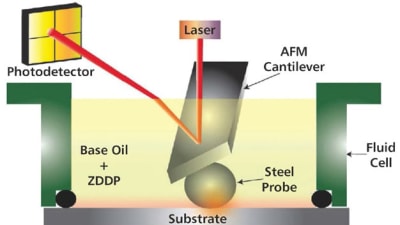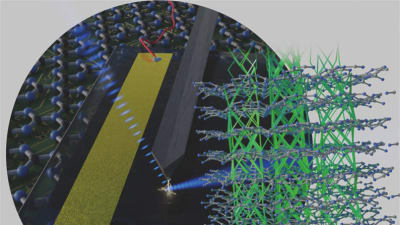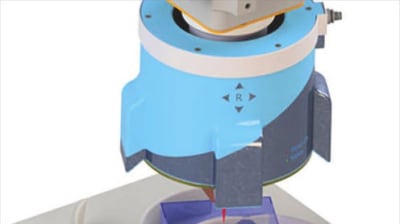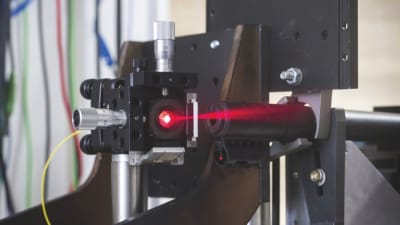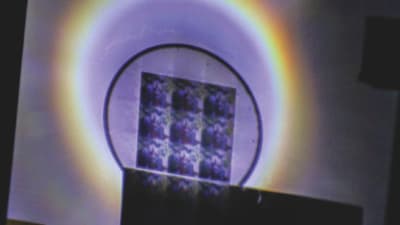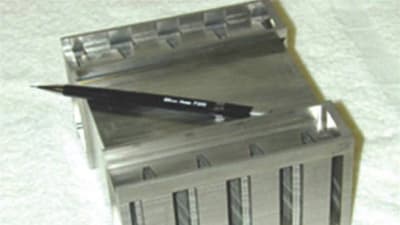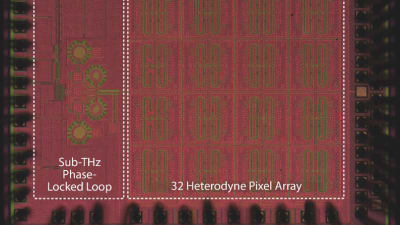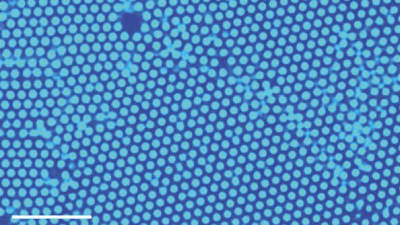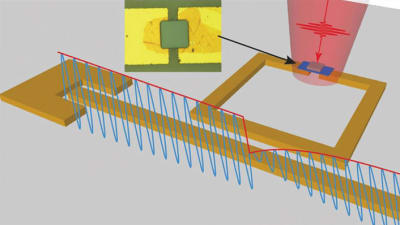35
61
169
-1
420
30
Briefs: Photonics/Optics
High quality camera performance on mobile devices has proven to be one of the features that most end-users aim for. The importance of optical image quality improvement and the trend to have thinner and thinner...
Briefs: Imaging
A new imaging method extracts a color image from a single exposure of light scattered through a mostly opaque material.
Briefs: Imaging
UCLA engineers have made major improvements on their design of an optical neural network — a device inspired by how the human brain works — that can identify objects or process...
Briefs: Software
Most of us know optical lenses as curved, transparent pieces of plastic or glass, designed to focus light for microscopes, spectacles, cameras, and more. For the most part, a lens’...
Briefs: Materials
A method was developed that enables information to be contained in simple plastic foils with a thickness of less than 50 μm, which is thinner than a human hair. Organic luminescent molecules...
Briefs: Software
3D printing via direct laser writing involves a computer-controlled focused laser beam that acts as a pen and creates the desired structure in the printer ink — a photoresist. In this way,...
Briefs: Materials
Different instruments are needed to study the interaction of contact surfaces at different length scales. Tribometers measure the coefficient of friction but they cannot...
Briefs: Mechanical & Fluid Systems
At the scale of bridges or buildings, the most important force that engineered structures need to deal with is gravity. But at the scale of microelectro-mechanical systems (MEMS) — devices like the...
Briefs: Photonics/Optics
Some organic materials cannot be utilized similarly to silicon semiconductors in optoelectronics. Whether in solar cells, light-emitting diodes, or in transistors, what is important is the bandgap, i.e. the...
Briefs: Sensors/Data Acquisition
Antenna Near-Field Probe Station Scanner
Antenna characterization techniques are often expensive and time-consuming. NASA’s Glenn Research Center developed a highly versatile and automated system to perform characterization of single or multiple small circuit antennas, printed on-wafer or on other substrates, by measuring the antenna’s...
Briefs: Test & Measurement
A portable, stable, standards-quality radiation thermometer was invented that can measure temperatures between -50 °C (-58 °F) to 150 °C (302 °F). The corresponding infrared wavelengths...
Briefs: Test & Measurement
Accurately detecting, locating, and quantifying leaks of methane — the main component of natural gas and a major fuel source worldwide — is critically important for both environmental and...
Briefs: Energy
Material for Faster Computer Memory
Scientists are studying bismuth ferrite (BFO) material that has the potential to store information much more efficiently than is currently possible. BFO could also be used in sensors, transducers, and other electronics.
Briefs: Materials
Microrobots that can deliver drugs to specific spots inside the body while being monitored and controlled from outside the body have been developed that also can treat tumors in the...
Briefs: Data Acquisition
Since 1998, almost 2,000 shoebox-sized satellites known as CubeSats have been launched into space. Due to their small frame and the fact that they can be made from off-the-shelf parts,...
Briefs: Imaging
The production of precision products depends on robot control systems knowing the location of the adhesive bonding head or welding head to the nearest millimeter at all times. This means the robot...
Briefs: Imaging
Scientists of Karlsruhe Institute of Technology (KIT) and École Poly-technique Fédérale de Lausanne (EPFL) have reported that they achieved the fastest distance measurement attained so far....
Briefs: Imaging
Although smartphones and other consumer cameras are increasingly used for scientific applications, it's difficult to compare and combine data from different...
Briefs: Robotics, Automation & Control
A new MIT-developed technique enables robots to quickly identify objects hidden in a three-dimensional cloud of data, reminiscent of how some people can make sense of a densely patterned “Magic Eye” image if...
Briefs: Photonics/Optics
A breakthrough imaging technique developed by Cornell researchers shows promise in decontaminating water by yielding surprising and important information about catalyst particles that can't be...
Briefs: Electronics & Computers
NASA Langley Research Center has developed a double-sided Si(Ge)/ Sapphire/III-Nitride hybrid structure. This technology uses both sides of a sapphire wafer to build device structures...
Briefs: Manufacturing & Prototyping
Researchers have created inexpensive, full-color, 2D and 3D holograms that are more realistic and brighter, and can be viewed at wider angles than current holograms.
Briefs: Photonics/Optics
Visualizing Motion of Water Molecules for Liquid-Based Electronics
A high-resolution inelastic x-ray scattering technique was used to measure the strong bond involving a hydrogen atom sandwiched between two oxygen atoms. This hydrogen bond is a quantum-mechanical phenomenon responsible for various properties of water, including viscosity, that...
Briefs: Electronics & Computers
Two very challenging problems facing the U.S. and the world are energy security and global climate change, largely due to dependence on fossil fuels. Cost-effective technologies have been developed that are capable...
Briefs: Imaging
Autonomous vehicles relying on light-based image sensors often struggle to see through blinding conditions such as fog. Sub-terahertz wavelengths, which are between microwave and...
Briefs: Mechanical & Fluid Systems
A new method uses ultraviolet light to control the flow of fluids by encouraging particles — from plastic microbeads, to bacterial spores, to pollutants — to gather...
Briefs: Mechanical & Fluid Systems
Even the smallest mechanical pumps have limitations, from the micro-fabrication techniques required to make them to the fact that there are limits on their size. A laser-driven photoacoustic microfluidic pump was...
Briefs: Semiconductors & ICs
Polymers are regularly used as thermal insulators and can even be used as thermal conductors to enable efficient heating or cooling. A new type of polymer was created that demonstrates a...
Briefs: Semiconductors & ICs
Accurately measuring semiconductor properties of materials in small volumes helps engineers determine the range of applications for which these materials may be suitable in the...
Top Stories
Blog: Manufacturing & Prototyping
2025 Holiday Gift Guide for Engineers: Tech, Tools, and Gadgets
INSIDER: Research Lab
Scientists Create Superconducting Semiconductor Material
Blog: Software
Quiz: Materials
Blog: Aerospace
Tech Briefs Wrapped 2025: Top 10 Technology Stories
Blog: Manufacturing & Prototyping
Webcasts
 Upcoming Webinars: AR/AI
Upcoming Webinars: AR/AI
The Real Impact of AR and AI in the Industrial Equipment Industry
 Upcoming Webinars: Motion Control
Upcoming Webinars: Motion Control
Next-Generation Linear and Rotary Stages: When Ultra Precision...
 Upcoming Webinars: Energy
Upcoming Webinars: Energy
Hydrogen Engines Are Heating Up for Heavy Duty
 Podcasts: Medical
Podcasts: Medical
How Wearables Are Enhancing Smart Drug Delivery
 Podcasts: Power
Podcasts: Power
SAE Automotive Podcast: Solid-State Batteries


